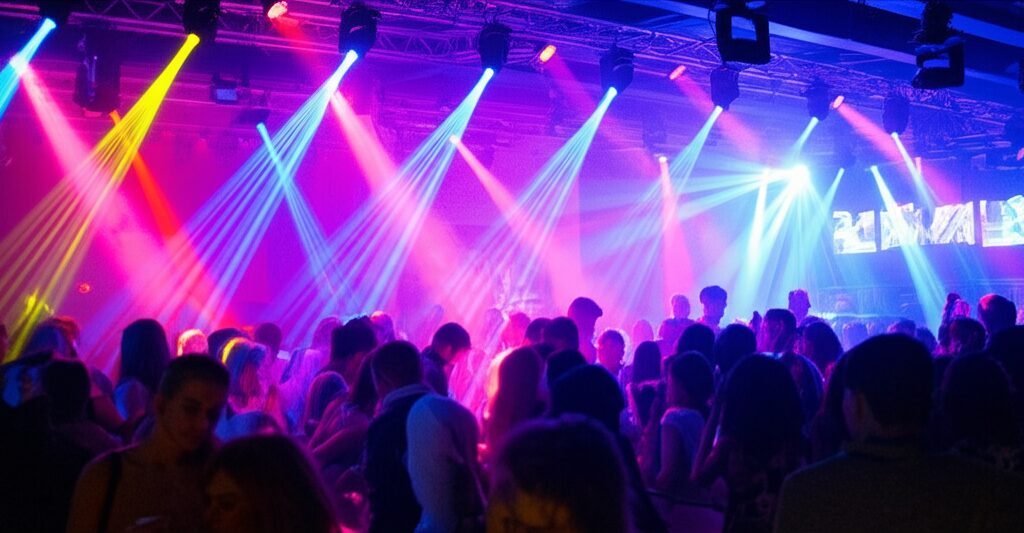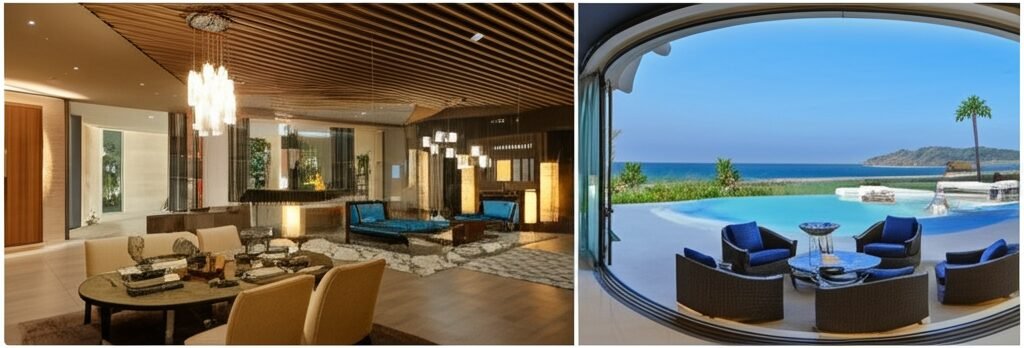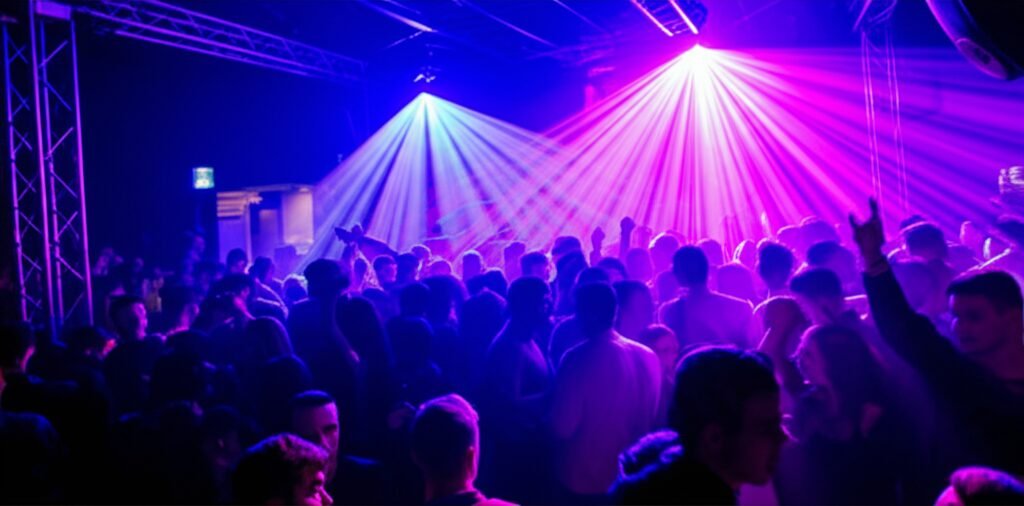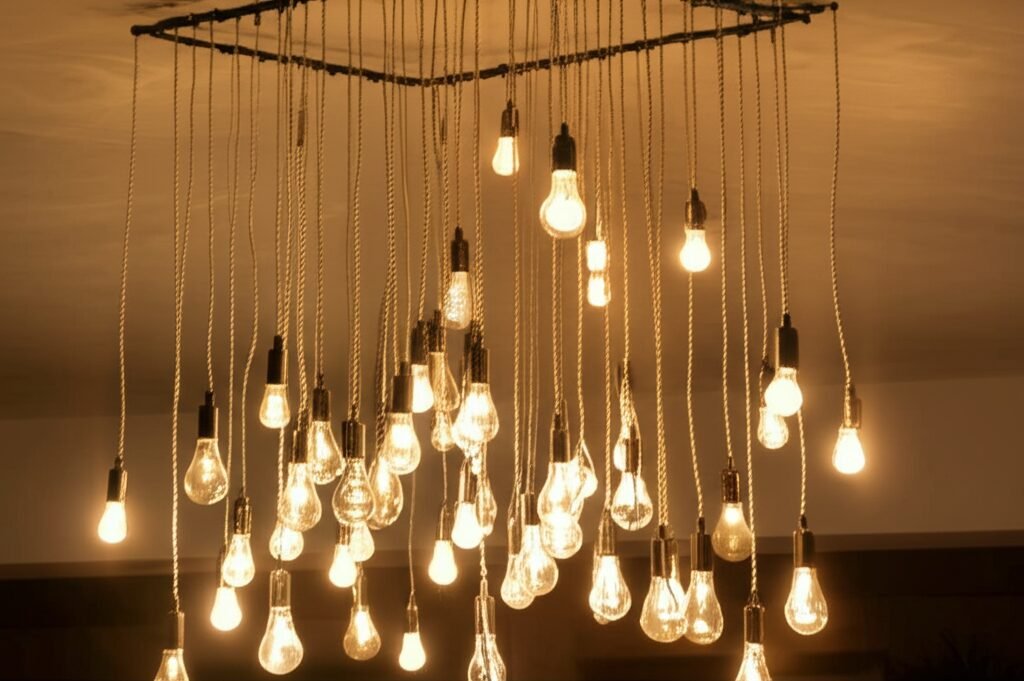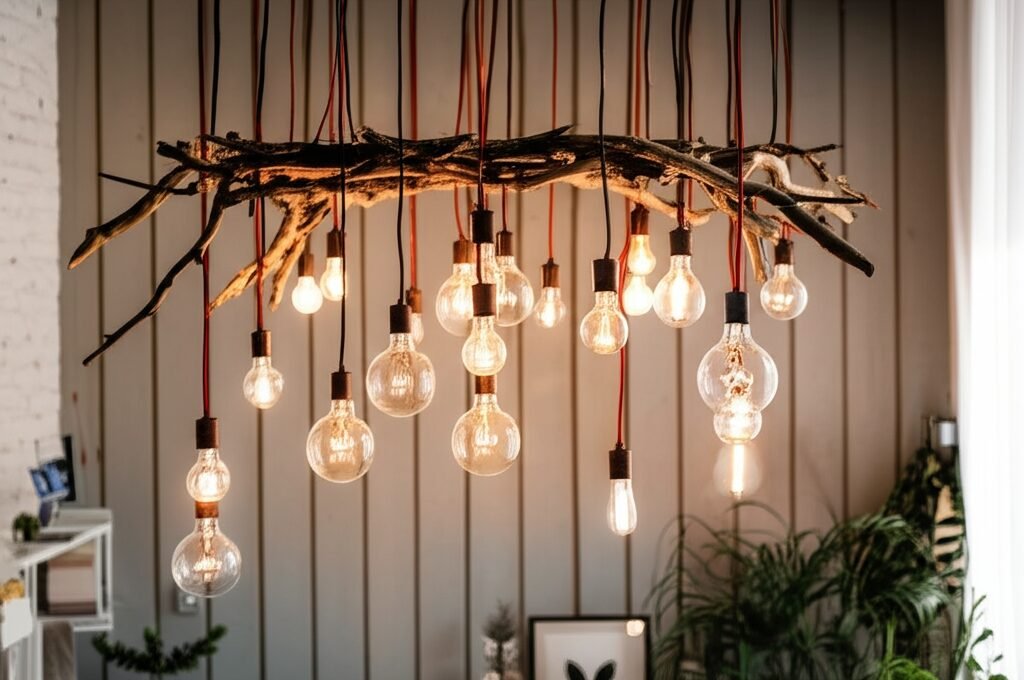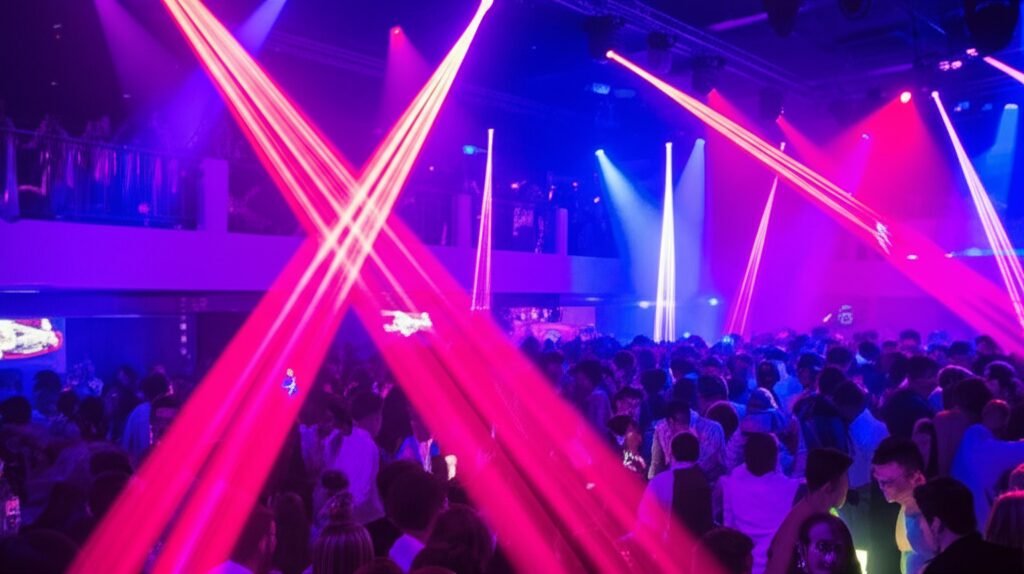Key Takeaways:
- Custom holsters for firearms with lights ain’t just a fancy add-on; they’re about safety and quick access when seconds count, ya know?
- Gettin’ a holster that’s molded specific to your gun and your light means no fumbling around. It just fits.
- Thinkin’ about the light around you is as important as the light on your gun. Good lightin’ in your home or practice spot makes a world of difference.
- Materials matter. Kydex, leather, or a mix – they gotta be tough and hold your gear secure, light an’ all.
- Retention’s a big deal. You want your firearm to stay put but be easy to draw. Level II is somethin’ to look into.
Why a Light-Bearin’ Holster is a Game Changer
So, you got yerself a trusty firearm, and you’ve slapped a tactical light on it. Good move, real good. But now, where d’ya stick it? That old holster you got? Prob’ly ain’t gonna cut it. It’s like tryin’ to fit a square peg in a round hole, ‘cept this peg could save yer life. A custom holster built for a weapon-mounted light (WML) is what you need, no ifs, ands, or buts. It’s not just ’bout carryin’ your piece; it’s ’bout carryin’ it right. When things go bump in the night, and lemme tell ya, they sometimes do, you wanna be able to identify what you’re pointin’ at before you make any, uh, irreversible decisions. A light helps with that, a whole heck of a lot. And a holster that accommodates that light seamlessly? That’s the ticket. You don’t want no snaggin’, no awkward draw, no nothin’ that slows you down. Milliseconds matter, folks.
Think ’bout it. You hear a crash downstairs. Adrenaline’s pumpin’. You grab your firearm, light already attached. Your hand finds the grip, and it slides out of the holster smooth as silk. The light cuts through the darkness, and you can see. That’s the peace of mind a proper light-bearin’ holster gives ya. Companies like Dara Holsters and Outlaw Holsters get this. They ain’t just churnin’ out generic bits of plastic. They’re craftin’ tools for serious situations. It’s about positive identification, ‘specially in low-light scenarios, which, let’s be honest, is when most bad stuff tends to happen. Havin’ that light integrated means it’s always there, always ready. No fumbling to attach it, no second-guessing. It’s part of the system. And the holster is the key to makin’ that system work efficiently. It’s gotta protect the light too, not just the firearm. Some of these lights are pricey, ya know? You don’t want ’em gettin’ dinged up or accidentally activatin’ ’cause the holster’s a poor fit. A good custom job considers all that. It’s an investment, sure, but what price safety, eh? It’s kinda like how some folks get real specific with their event-specific lighting solutions for, say, a fancy party or somethin’. The lightin’ sets the mood, makes things clear. Same idea here, just a bit more… urgent.
A custom WML holster is designed so the retention points often engage with the light body itself, or the trigger guard in conjunction with the light. This means the fit has to be perfect. If it’s too loose, you risk losin’ your firearm. Too tight, and your draw is gonna be a struggle. That’s why goin’ custom is often the best route. They can mold it to your exact firearm-and-light combo. It ain’t a one-size-fits-all world, ‘specially not with this kinda gear. And it ain’t just about function; a good holster should be comfortable enough for all-day carry if that’s your need. A poorly designed one will just end up in a drawer, and what good is that? So yeah, it’s a game changer, alright. It changes how you prepare, how you carry, and how you might respond. It’s about bein’ prepared for the dark, both literally and metaphorically.
Gettin’ the Perfect Fit: Customization is Key for Yer Light and Firearm
Alright, so we’ve established that a holster for your light-equipped firearm ain’t somethin’ to skimp on. Now, let’s talk ’bout fit. This is where “custom” really earns its keep. You wouldn’t wear shoes that are three sizes too big, wouldja? Or try to squeeze into somethin’ way too small? Same principle applies here, but the stakes are a bit higher than a blistered heel. A custom holster, like those you might find from makers who really know their stuff, is molded to the exact contours of your specific firearm and the specific light you’ve attached to it. That Fattac Standard Holster – Light Compatible Concealed Carry Holster is a good example of somethin’ built with light compatibility in mind from the get-go. It’s not an afterthought.
Why’s this so darn important? Lemme list a few reasons:
- Retention: This is paramount. The holster needs to grip your firearm securely, so it doesn’t go flyin’ out if you’re runnin’ or, heaven forbid, take a tumble. But it also needs to release it smoothly when you draw. Custom molding ensures the retention points are exactly where they need to be for your setup.
- Protection: Your firearm and your light are investments. A well-fitted holster protects them from scratches, dings, and the elements. It also protects the trigger, which is a critical safety feature, preventin’ accidental discharge.
- Draw Speed and Consistency: When you practice your draw (and you should, a lot!), a custom fit means the firearm is always in the same position, and the release is predictable. This builds muscle memory, which is crucial under stress. No one wants to be fumbling when seconds count.
- Comfort: If you’re carryin’ all day, an ill-fittin’ holster can be a real pain, literally. Custom options often allow for adjustments in cant (angle) and ride height, so you can find what works best for your body type and carry style.
It’s kinda like balancin’ functionality and artistry in artistic glass lighting for villas. You want it to look good, sure, or at least not be an eyesore, but more importantly, it has to work perfectly. The “artistry” in a holster is in its perfect function, its seamless integration with you and your gear. Every curve, every edge, every retention point is there for a reason. It’s a science, but there’s an art to gettin’ it just right.
Think about the materials too. Kydex is popular ’cause it’s tough, holds its shape, and can be molded with incredible precision. Leather offers a classic feel and can conform to your body over time, though it might need more break-in for a WML setup. Hybrids try to give ya the best of both worlds. A custom maker can walk you through these choices, helpin’ you pick what’s best for your needs and your specific firearm/light combo. They’ll ask about your carry position – IWB (inside-the-waistband), OWB (outside-the-waistband), appendix – and tailor the holster accordingly. This ain’t off-the-rack, folks. This is made for you. And that precision, that attention to detail, that’s what gives you the confidence that your gear is secure and accessible when you need it most. It’s a bit like a bespoke suit, but for your firearm. It just feels right.
Beyond the Holster: Illuminatin’ Your Safe Space and Training Zone
Now, havin’ a light on your firearm is one thing, and it’s mighty important. But let’s broaden our view a tad. The light around you, in your home or your dedicated training space, that’s also a big piece of the puzzle, ain’t it? You can have the best WML and holster combo, but if you’re stumblin’ around in pitch blackness in your own house during a stressful situation, or tryin’ to practice in a poorly lit environment, you’re puttin’ yourself at a disadvantage. It’s like tryin’ to navigate a maze wearin’ a blindfold, even if you got a tiny flashlight in your hand. The ambient lightin’ in your environment plays a huge role in situational awareness and your ability to react effectively.
Consider your home, your “safe space.” How’s the lightin’ in hallways? Stairwells? Are there dark corners where someone could hide? Strategically placed lights, maybe even motion-activated ones, can make a huge difference. This ain’t just about deterring burglars; it’s about you bein’ able to see and assess if, God forbid, somethin’ does happen. You might even think about mood lighting techniques, like they use in high-end clubs, but adapt ’em for your home. Not for dancin’, mind you, but for creatin’ an environment where you can see clearly without it bein’ overlit and harsh. Think soft, indirect lighting in key areas, enough to navigate safely and identify things, but not so bright it ruins your night vision if you have to move from a lit area to a dark one.
Then there’s your training zone. Whether it’s a corner of your basement, a garage, or a dedicated room, proper lightin’ is crucial for effective practice. You need to see your sights, your target, and your surroundings. This is where you could get creative. Maybe you want to simulate different conditions. Bright light, low light, even sudden changes. This could be where thinkin’ about event-specific lighting solutions comes in handy, metaphorically speakin’. You’re settin’ up a “training event,” and the lighting should support that. Can you dim the lights? Can you focus a light on the target area? Good lightin’ helps you ingrain proper technique and identify any flaws in your presentation or sight picture. It also makes practice safer. You don’t want to be trippin’ over stuff or mishandlin’ your firearm ’cause you can’t see properly. Just as a custom holster ensures your firearm and WML are an effective unit, good ambient and training area lighting ensures you can be effective with them. It’s all part of a system, see? The holster is the interface between you and your tool, and the environmental lighting is the interface between you and your surroundings. They all gotta work together.
DIY Lighting for Your Gun Room? Some Thoughts and Cautions
So, you got a space where you keep your gear, maybe a gun room, a safe, or even just a dedicated corner. You want it well-lit, right? Not just so you can see what you’re doin’, but maybe to display your collection a bit, or just make it a more functional space. Now, you could call in a pro, or you could get a bit handy and think about some DIY lightin’ solutions. There’s a certain satisfaction in buildin’ somethin’ yourself, and it can save you a few bucks too. Maybe you’re lookin’ at somethin’ like a DIY branch chandelier step-by-step guide for inspiration – not necessarily a chandelier made of branches for your gun room, unless that’s your aesthetic, but the principle of takin’ basic materials and creatin’ somethin’ custom and functional.
What kinda DIY lightin’ are we talkin’ about for a gun-related space?
- LED Strip Lights: These are super versatile. You can stick ’em under shelves, inside safes, along display cases. They come in different colors and brightness levels. Easy to install, low power consumption. Great for accent lighting or makin’ sure you can see the serial number on that ol’ rifle.
- Puck Lights: Battery-operated or wired, these are good for focused light in smaller areas, like individual shelves in a gun cabinet.
- Track Lighting: If you want flexible, aimable light, track lighting can be a good DIY project. You can point the spots exactly where you need ’em, highlightin’ specific items or just floodin’ the workbench with light.
- Custom Enclosures for Lights: Maybe you build a custom shadow box for a prized pistol and integrate some subtle LED lighting into it.
But hold yer horses. Before you go all MacGyver with wires and bulbs, there’s some serious stuff to consider. Electrical work ain’t somethin’ to take lightly, no pun intended. It’s real important to be aware of common mistakes to avoid in DIY lighting. Things like usin’ the wrong gauge wire, overloadin’ circuits, or makin’ poor connections can be dangerous. We’re talkin’ fire hazards or electrical shock. Not good.
And that brings us to safety tips for DIY lighting. This is non-negotiable.
- Turn Off The Power: Always, always, always turn off the circuit breaker before you start messin’ with any wiring. Test it to make sure it’s off.
- Use The Right Tools: Insulated screwdrivers, wire strippers, voltage tester. Don’t try to make do with kitchen knives and pliers.
- Understand Basic Wiring: If you don’t know your hot from your neutral from your ground, maybe stick to battery-operated stuff or get some help.
- Don’t Overload Circuits: Know how much your circuit can handle.
- Follow Codes: Even for DIY, there are local electrical codes. It’s worth checkin’ ’em out.
So, while DIY lightin’ for your gun room can be a great project, approach it with respect and a healthy dose of caution. If you’re just doin’ some low-voltage LED strips, the risk is lower, but for anythin’ involvin’ household current, if you ain’t 100% sure, call an electrician. Better safe than sorry, especially when you’re workin’ in a room that, by its nature, is all about safety and preparedness.
Creatin’ a “VIP” Display for Your Collection (And Holsters!)
Let’s say you’ve got a few prized pieces in your firearm collection. Maybe some historical items, some custom jobs, or just your favorite everyday carry rig, complete with its perfectly fitted light-bearin’ holster. You don’t just wanna stuff ’em in a dark safe, do ya? Sometimes, it’s nice to display ’em, securely and tastefully, of course. This is where you can get a bit creative and think about makin’ a sort of “VIP area” for your gear. And what makes any VIP area feel special? Good lightin’, that’s what. It’s kinda like how high-end clubs use custom lighting to create VIP areas that feel exclusive and draw attention to the good stuff. You can apply similar principles, on a much smaller and more secure scale, obviously.
How can you use lightin’ to make your collection pop?
- Spotlights: Small, focused LED spotlights can highlight individual firearms or holsters within a display case or on a secure wall mount. Think art gallery, but for your tools.
- In-Cabinet Lighting: LED strips or puck lights installed inside a glass-fronted gun cabinet can provide beautiful, even illumination without generatin’ a lot of heat, which is important for preservin’ finishes and any wood components.
- Backlighting: Placing lights behind a translucent panel or diffusin’ material can create a soft glow that silhouettes items or provides a sophisticated backdrop.
- Color Temperature: Consider the color of the light. A warmer white (around 2700-3000K) can give a classic, rich feel, good for wood stocks and leather holsters. A cooler white (4000-5000K) can provide a more modern, clean look, accentuatin’ the metallic finishes of firearms and Kydex holsters.
You might even get into some creative upcycling ideas for your display. Maybe an old wooden box, refinished and fitted with custom foam and subtle LED lighting, becomes a unique display case for a pistol and its light-bearin’ holster. Or perhaps you repurpose some industrial-lookin’ metal pieces into a secure but stylish wall rack, with integrated lighting to show off the lines of your long guns. The key is to make sure any display is still secure. We’re talkin’ lockable cabinets, sturdy mounts, and discretion. A beautifully lit display is great, but safety and security come first, always.
Think about the materials of the display itself. Glass shelves can allow light to pass through, illuminatin’ multiple levels. Mirrored backings can reflect light and make the space seem larger. Dark, matte backgrounds can make metallic items stand out more dramatically under focused light. It’s all about creatin’ contrast and drawin’ the eye. Just remember, the goal ain’t to be flashy in a way that compromises security, but to appreciate the craftsmanship and utility of your tools in a well-presented manner. For an enthusiast, a well-lit collection, including the holsters that make them practical, can be a source of pride and a reminder of the responsibility that comes with ownership. It’s about respect for the tools, and lightin’ can help express that.
Retention Levels: What You Need to Know for Light-Equipped Holsters
Alright, let’s dive back into the nitty-gritty of the holsters themselves, ‘specially when they’re designed to carry a firearm with a light attached. One word you’ll hear a lot is “retention.” What’s it mean? Simply put, it’s how well the holster holds onto your firearm. You don’t want it fallin’ out, but you also need to be able to draw it efficiently. There are different “levels” of retention, and it’s somethin’ you really gotta understand before pickin’ a holster, particularly for duty use or situations where you might be more active. A good place to learn ’bout higher retention is lookin’ at somethin’ like a Level II Retention Holster. These often have an active retention device, like a thumb break or a finger-actuated lever, in addition to the passive friction fit.
So, what are these levels? It ain’t always super standardized across all makers, but generally:
- Level I Retention: This is typically a passive retention system. The holster holds the firearm using friction, often from the precise molding of Kydex around the firearm and its light. Most concealed carry holsters fall into this category. The firearm is secured by the way the holster is shaped and by the pressure exerted by your belt if it’s an IWB. For a light-bearin’ holster, the light itself often becomes a major point of retention.
- Level II Retention: This usually means there’s one active locking mechanism in addition to the passive friction fit. This could be a strap over the back of the slide (a thumb break) or a mechanism that locks onto the trigger guard or ejection port, which needs to be released by your thumb or finger during the draw stroke. This adds an extra layer of security, makin’ it harder for someone else to grab your firearm.
- Level III Retention (and higher): These holsters have two or more active retention devices. You’ll see these mostly with law enforcement or military personnel, where weapon security in a physical confrontation is a major concern.
Now, for a custom holster with a light, the design of these retention systems gets even more critical. The light changes the profile of the firearm, so the retention points have to be engineered specifically for that combination. A good custom maker, like Dara Holsters who specialize in this stuff, will ensure that even with the added bulk of a light, the retention is solid and the draw is still intuitive once you’ve trained with it. The active mechanism needs to be easy for you to disengage quickly, but difficult for anyone else to defeat. It’s a fine balance.

Why bother with higher retention if you’re a civilian? Well, it depends on your lifestyle and concerns. If you’re open carryin’ (where legal and appropriate), a Level II holster is a very good idea. Even for concealed carry, some folks prefer the added peace of mind, especially if they’re worried about gun grabs or if they’re involved in activities that might dislodge a firearm from a simpler holster. The trade-off is usually a slightly slower draw, at least until you’ve practiced extensively. But for many, that extra split-second is worth the increased security. When you’re lookin’ at custom holsters with light, ask the maker about the retention options they offer and discuss what’s best for your specific needs and your specific firearm/light combo. It’s about finding that perfect integration of security and accessibility, kinda like how you’d want perfect sound and light integration in a professional setup – everything working together seamlessly and securely.
Materials and Durability: Holsters Built to Last (And Shine!)
When you’re investin’ in a custom holster for your firearm and its attached light, you want somethin’ that’s gonna hold up, right? You need it to be durable, reliable, and able to withstand the rigors of daily carry or intense training. The materials used in makin’ the holster play a massive role in this. It ain’t just about lookin’ good; it’s about performin’ when it counts. Let’s look at some of the common materials you’ll find and why they’re chosen, ‘specially for light-bearin’ applications.
Kydex:
- Pros: Kydex is a thermoplastic, which means it can be heated and molded to incredibly precise shapes. This is perfect for gettin’ that exact fit around your firearm and light. It’s also very rigid, so it holds its shape well, allowin’ for consistent reholstering. It’s waterproof, sweat-proof, and pretty resistant to scratches and impacts. Cleanin’ it is easy too, usually just a wipe-down. For light-bearin’ holsters, Kydex provides excellent protection for the light itself.
- Cons: Some folks find it less comfortable against the skin than leather, though good design and smooth edges can mitigate this. It can also potentially cause more wear on a firearm’s finish over time compared to well-maintained leather, though this is often a debated point and depends on many factors.
Leather:
- Pros: Leather can be very comfortable, as it tends to conform to your body shape over time. It’s quiet to draw from, which some folks prefer. Aesthetically, many people just love the look and feel of a quality leather holster.
- Cons: For light-bearin’ holsters, leather needs to be very well made and often reinforced to prevent it from collapsing after the firearm is drawn, which can make reholstering difficult. It also requires more maintenance – it can absorb moisture (like sweat), which isn’t great for your firearm, and it needs occasional conditionin’. Break-in time is also a factor.
Hybrid Holsters:
- Pros: Typically, a hybrid holster will have a Kydex shell for retention and easy reholstering, mounted to a leather or synthetic backing for comfort against the body. This can be a great compromise.
- Cons: They can be a bit bulkier than a full Kydex or full leather holster. The quality of both the Kydex portion and the backing material is important.
No matter the material, the construction quality is key. Look for smooth, polished edges on Kydex to prevent discomfort or snaggin’ on clothes. For leather, check the stitching and the quality of the hide. The hardware – screws, belt clips, loops – should also be robust. Remember, this holster is carryin’ a critical piece of safety equipment, and it needs to be up to the task, day in and day out. It’s like the perfect sound and light integration you’d want in a high-stakes environment; every component has to work flawlessly with the others. The material provides the structure, the design provides the function, and together they ensure your firearm and light are secure, protected, and ready. Companies like Outlaw Holsters often offer choices in materials or specialize in one to perfect its application. They understand that durability isn’t just about how long the holster lasts, but how well it performs throughout its life.
Think about how the material interacts with the light itself. Kydex can be molded to protect the lens and body of the light from impacts. Leather, if properly designed, can do the same but might be more susceptible to abrasion around the light. The durability of the holster directly impacts the longevity and readiness of your entire defensive setup. It’s not just a bucket to hold your gun; it’s an integral part of your system.
The Future of Holsters and Integrated Tech: More Than Just a Light?
We’ve talked a lot ’bout custom holsters for firearms with lights, and that’s a big step forward in personal defense preparedness. But what’s next? Technology ain’t standin’ still, and you can bet holster design and the things they integrate won’t either. It’s kinda fun to speculate where things might be headed. We’ve seen firearms get “smarter,” and lights get smaller, brighter, and more efficient. So, what could the future hold for the humble holster? It might become a hub for even more integrated tech, much like how a modern venue needs sophisticated designing for dance floors that integrates light and sound to create a dynamic experience.
Here’s some food for thought, just spitballin’ here:
- Smart Holsters: We’re already seein’ the beginnings of this. Holsters that can log when a firearm is drawn, or even alert an owner or authorities if a firearm is removed without authorization (think smart safes, but for carry). This could involve biometric locks integrated into the retention system, only releasin’ the firearm for the authorized user.
- Power Integration: With lights, lasers, and maybe even future optics needing power, could holsters incorporate some kinda charging system? Maybe inductive chargin’ while the firearm is holstered, so your accessories are always topped up. Sounds a bit sci-fi, but hey, so did pocket computers once.
- Data Logging/Feedback: For trainin’ purposes, could a holster integrate sensors to provide feedback on draw stroke speed, angle, and consistency? Connect it to an app, and you’ve got a personal coach.
- Miniaturization of Lights/Lasers: As the tech for lights and lasers gets even smaller, holster designs will adapt. We might see lights that are almost flush with the firearm’s frame, requirin’ even more precise molding but leadin’ to less bulky carry packages.
- New Materials: Kydex and leather are great, but material science is always advancin’. We could see new composites that are even lighter, stronger, more comfortable, or have self-healin’ properties. Imagine a holster that can repair minor scratches itself!
- Built-in Backup Sights/Optics Protection: Some holsters already offer protection for slide-mounted red dot sights. Future designs might offer even more integrated ways to protect delicate accessories or even have minimalist backup iron sights built into the holster body itself, visible only when the firearm is drawn in a specific way – okay, that last one is a stretch, but who knows!
Innovation often comes from companies willin’ to push boundaries. Even a company like Werkz – Digital Marketing Agency, while not in the holster biz, represents the kinda forward-thinkin’ that drives change in any industry. They help businesses adapt and grow online, which is all about embracin’ new technologies and approaches. The firearms and accessories world is no different. Makers are constantly lookin’ for an edge, a way to make their products better, safer, more efficient. The end-user, the person relyin’ on this gear, benefits from this competition and innovation. The core job of the holster – to securely carry and allow quick access to a firearm – will remain. But how it does that, and what other capabilities it might offer, that’s where things could get real interestin’. Just like lights on guns were once a niche item and are now mainstream, other tech integrations could follow the same path. The future is lookin’ bright, you might say.
Frequently Asked Questions (FAQs)
Q1: Why do I need a special holster if I put a light on my gun? Can’t I just use my regular one?
A1: Nah, not really. A regular holster is molded for just the gun. Addin’ a light changes the whole shape. Tryin’ to stuff it in an old holster will be a bad fit, could damage the light or gun, won’t hold it secure, and will make for a terrible draw. You need a holster specifically designed for your gun and your particular light model.
Q2: What’s better for a light-bearing holster, Kydex or leather?
A2: Both got their pros and cons, ya see. Kydex is super precise, durable, and waterproof, great for holdin’ its shape for the light. Leather is comfy and classic but needs more care and must be real stiff for a light setup. Many folks like hybrids – Kydex for the gun/light shell, leather for the backing against your body.
Q3: What does “Level II Retention” mean, and do I need it for my light-equipped holster?
A3: Level II means it has one active lockin’ mechanism (like a thumb strap or a button release) on top of the usual friction fit. It makes it harder for someone else to snatch your gun. If you’re open carryin’, it’s a real good idea. For concealed carry, it’s personal preference for extra security. Dara Holsters offers Level II options if you want to see examples.
Q4: Will a light-bearing holster wear out my gun’s finish faster?
A4: Any holster can cause some finish wear over time with enough draws and reholstering, it’s just a fact of life. Kydex, ’cause it’s hard, might show wear a bit differently than smooth leather. Keepin’ your holster clean and free of grit helps a lot, no matter the material.
Q5: Are custom light-bearing holsters really expensive?
A5: They can be a bit more than a generic, off-the-shelf holster, sure. But you’re payin’ for a precise fit to your specific gun and light combo, often with choices in materials, clips, and cant. Considerin’ the importance of safely and effectively carryin’ your firearm, many folks find it a worthwhile investment. Check out makers like Outlaw Holsters or Fattac Holsters to get an idea of options and pricing.
Q6: How important is the brand of the light when choosing a custom holster?
A6: Very important! Holster makers mold their light-bearin’ holsters to fit specific light models (e.g., a Streamlight TLR-1 will need a different holster than a SureFire X300, even on the same gun). So, you gotta tell the holster maker exactly which gun and which light you have.
Q7: Can I get a light-bearing holster for inside-the-waistband (IWB) carry?
A7: You bet. Many companies make IWB holsters designed for guns with lights. They’ll be a bit bulkier than a non-light IWB holster, naturally, but with good design and the right belt, it’s definitely doable for concealed carry.


